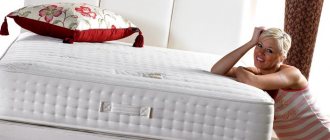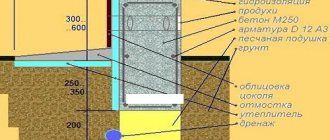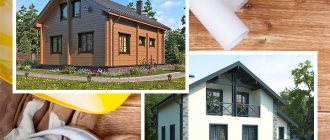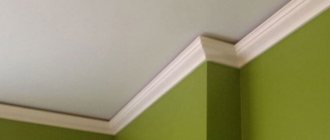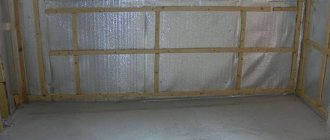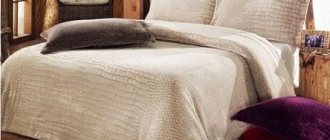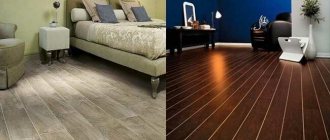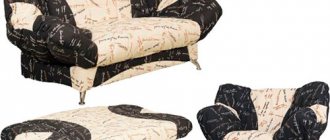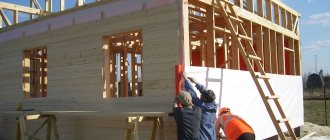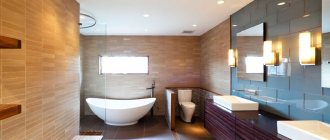A double bed is usually used by two people, who often differ significantly in their parameters. Weight, body type, spinal problems and other factors do not allow the use of a regular mattress. How can you make sure that the bed suits both of you completely? Much depends on the right choice of orthopedic mattress. Next, we’ll tell you how to choose a mattress for a double bed. We will also consider the top best manufacturers.
How to choose the right mattress size
Any choice of a mattress for a double bed begins with determining its size. Standard width parameters are in the range of 160-200 cm, and the length has only three standard sizes - 1.9; 1.95 and 2.0 m. Measurements are taken on the bed itself, and not on the old mattress. During long-term use, it deforms and the dimensions do not match. The most popular dimensions are 160x200 cm.
The length is selected according to the height of the tallest partner. The height of the product is selected depending on the filler used. In spring models - 18-24 cm, in springless models - 15-18 cm. This value does not affect the resistance of the mattress to high loads.
Dimensions of American models are indicated in inches. This must be taken into account when choosing, since, for example, 80 inches will be equal to 203 cm, and this figure does not correspond to the size of a bed made in Russia or Europe. In general, it is recommended to choose a mattress from the same brand or company as the bed itself.
The maximum load value is indicated in the product passport based on 1 berth. Multiplying the figure by two, you get the load on the entire mattress. Such calculations will be correct if the build of both partners is approximately the same, and the difference does not exceed 30 kg. Otherwise, you will have to choose the design individually.
Choosing a double mattress: it's all about hardness
When you and your partner compromise when choosing a mattress, making a joint decision often comes down to different habits and needs. Some people sleep peacefully, while others turn around in their sleep, some prefer a harder surface, some prefer a softer one. One way or another, the hardness of a mattress for a double bed becomes one of the key points.
For those whose preferences differ markedly, manufacturers offer the following mattress models:
- With longitudinal zones of rigidity. If the weight difference between you and your partner is over 30 kg, such a mattress will make everyone feel comfortable. The difference in the elasticity of the zones is achieved through springs of varying degrees of reinforcement, as well as a combination of soft and hard fillers (for example, polyurethane foam and coir).
- Transverse stiffness zones. Areas with varying degrees of elasticity in such mattresses alternate across - there can be from 3 to 15 such areas. The more such zones, the more evenly the weight is distributed, and the less pressure from a partner is felt on the mattress.
- Spring blocks Dual Spring. This design is also known as a "duet", "spring in a spring" or "kangaroo". Each element consists of two springs - a narrower inner one and a larger outer one, and their joint work makes it possible to evenly distribute a load of 100 kg or more.
- Double firmness mattress. As a rule, two types of fillers are used in such models - softer on one side and harder on the back. By turning the product over from time to time, you can select the optimal level of elasticity of the sleeping place.
If you have the opportunity to test a mattress before purchasing, then you should take advantage of it. This way you can more accurately assess the degree of comfort when sleeping together.
How does an orthopedic mattress for a double bed differ from a regular one?
Before talking about the differences, it should be noted that deep muscle relaxation is required for proper rest at night. During the day, the muscles constantly work to support the vertical position of the spine, while experiencing heavy loads. This leads to fatigue, and after going to bed, the load is partially removed and transferred to the mattress. Due to this, the muscles rest and recover.
In order for the body weight to be evenly distributed over the surface, the neck and back must be maintained in an anatomically correct position at night. In this case, the configuration of the product coincides with the natural curves of the spine. However, a simple mattress is not capable of this; to achieve the desired effect, a special orthopedic option will be required.
Compliance with the natural curves of the spine is achieved thanks to the special design of the mattress and the materials of the internal filler. Orthopedic products for double beds have a wide range of elasticity. This is very important because two different people have their own mass and their own need for anatomical support.
Mattresses on spring blocks: types, pros and cons
In accordance with the design features, all spring mattresses are classified as products with dependent and independent springs.
Dependent blocks use springs consisting of 4 turns. At the top and bottom they are connected by thin spiral-shaped wires. The diameter is 6-10 cm, and 100-150 springs are placed in 1 m². Due to the connection method, this technology is outdated, since when pressure is applied to a certain area, the entire adjacent area is deformed. Therefore, during sleep, the body sag and moves into an uncomfortable position.
One of the advantages is accessibility to consumers due to low cost. When using modern materials - polyurethane, latex, etc. – they are of good quality and do not require special care.
Which mattress is better to choose, spring or springless?
An independent spring block is considered a more advanced design. It includes independent springs placed in separate cases. This separation made it possible to overcome the squeezing characteristic of dependent blocks. Body weight is evenly distributed over the area, completely eliminating the so-called hammock effect.
The main differences between these blocks are the following:
- Reduced diameter – 3-5 cm.
- Larger number of turns - 7-8 pcs.
- The spring density increased to 1000 pcs. per 1 m². The higher this indicator, the higher the level of comfort.
The advantages of such spring mattresses include:
- Increased elasticity, allowing two people to sleep comfortably.
- The head and back are maintained in the correct position during sleep.
- There are no squeaks or other extraneous sounds during turns.
- The springs practically do not clog, the entire structure is reliable and lasts a very long time.
How much does a double mattress cost?
The cost of a good product can range from 5 to 250 thousand rubles.
The most affordable option are springless models that have good anatomical properties. They provide a comfortable and healthy sleep. The version with an independent spring block is somewhat more difficult to manufacture, which is why their price is significantly higher than previous designs - from 25 thousand rubles and more. Good anatomical mattresses with a dependent spring block are also more expensive; they have also proven themselves well in the specialized market. But let us remind you that this is already from the field of medicine. Share:
Double spring mattresses for different weight categories
Each spring model is designed for a specific weight category and the total number of users. Therefore, before buying this or that mattress, you should pay attention to its design, which differ significantly from each other.
Mattress with Double Spring block
People with a weight difference of over 20 kg have a completely different feeling of firmness when using the bed. Manufacturers calculate this figure based on the average weight of one person being 60-90 kg. When leaving this range, the surface will be perceived differently.
In this regard, it is very difficult for partners with a large difference in weight to choose a good mattress that would suit both of them at once. It is for such cases that the DS (Double Spring) block of double design was designed. In this “Duet” a small spring with increased rigidity is inserted inside a large spring.
The principle of operation of the Double Spring system is as follows: with a small weight, only large springs can cope quite well, and with increased loads, short small springs are activated. Such units are included in the Premium class segment and are distinguished by their reliability and long service life.
Mattress with hourglass springs
The manufacturer of spring mattresses with load-bearing elements in the shape of an hourglass is the company Ascona. This form contributes to the most optimal overcoming of non-standard and increased loads.
The operating principle is based on gradual compression of springs. First, the upper and lower parts work, and only after that comes the turn of the toughest middle. This design is perfect for frequent use or under significant loads. However, the capabilities of such springs are still limited: they do not like jumping, frequent sitting on the edge, extreme loads and other negative factors.
Double-sided flip mattresses
If you do not have sufficient funds, you can choose a so-called inverted mattress. Its upper and lower parts have variable stiffness due to the use of foam fillers with different elasticity. From time to time, such a mattress is turned over according to its own needs, for more convenient and comfortable use. Uniform distribution of loads over surfaces increases the service life of the product.
Types of mattresses
Mattresses can be divided into spring and springless.
Spring mattresses with independent and dependent springs
In mattresses with independent springs, each spring is isolated and does not contact its neighbors. This design feature prevents the “hammock effect” from occurring, in which the spinal column sag. In models with dependent spring blocks, pressing one of the springs also affects the neighboring ones. The number of springs per square meter can be up to 256, 500 and 1000.
Mattresses with independent spring blocks placed in fabric covers perfectly adapt to the anatomical shape of the body.
Without springs
In springless mattresses, the perception of the load from lying bodies falls entirely on the filler. Hence the increased requirements for their characteristics. Especially to elasticity and resilience, the ability to quickly recover from deformation. When you select a mattress, pay special attention to whether the filler in question meets the necessary parameters.
Polyurethane foam, struttofiber, latex, coconut coir, and so on are used as fillers.
Bonnell
Bonnel is a “classic” spring block that has been used for many decades. Withstands heavy loads, is durable and wear-resistant. Consists of rigidly coupled five-turn springs made of thick steel wire. The price is low. Not recommended for couples with large weight differences.
The Bonnell mattress is a mattress with a dependent spring block inside, all the structural elements of which are interconnected.
Springless mattresses
Latex mattresses
Latex is a natural filler. The raw material for its production is the sap of the hevea tree, which is then foamed using special technology. The milky liquid, which is highly viscous, contains large quantities of organic and mineral components.
The filler contains up to 40% rubber. After processing, it becomes elastic, elastic and precisely adapts to the configuration of the human body. Latex mattresses are characterized by antibacterial and hypoallergenic properties, high breathability and hygroscopicity. All these qualities help maintain an optimal microclimate in the sleeping area. Latex prevents the appearance of insects and harmful microorganisms.
Before buying such a mattress, do not forget about artificial latex. According to manufacturers, this material is no different from natural material. However, in practice, as user reviews show, synthetic analogues are characterized by low strength and do not last very long. Gradually they become rigid and begin to crumble and deform. The only advantage of such products is their low cost.
Coconut
When deciding how to choose a springless mattress, many people choose coconut models. The starting material is the fibers that cover the outside of the coconut. This is the safest and most environmentally friendly product, especially in demand for the production of children's mattresses.
The obvious advantages of coconut filler are:
- Natural composition.
- The rigid structure helps strengthen the spine and has a beneficial effect on posture.
- Air permeability, ability to evaporate any moisture. As a result, rotting and mold formation are prevented. Equally good for both children and adults.
- Coconut products are elastic and resistant to deformation. The optimal degree of rigidity adapts well to the body. There are only restrictions associated with excessive loads.
Durability and comfort make coconut mattresses popular among users, despite their high cost.
Mattresses made of struttofiber
Struttofiber is a non-woven synthetic material based on polyester. Initially, the fibers are subjected to heat treatment, after which they are passed through a wind tunnel, where they are treated with hot air. After this, the fibers become vertical, and thanks to polyester, they are securely connected to each other.
At the output, a web is formed in the form of an elastic mat. The main layer consists of fibers that act as independent springs. Inside, the fibers are reinforced with hardened polyester.
In addition to the main material, the following components are used in the struttofiber structure:
- Camel or goat hair as insulation.
- Linen is like a thermostat.
- Elasticity is increased with horsehair.
- Coconut coir or sisal for added strength.
The result is a three-layer structure. The layers located at the edges perform the function of fastening, and the bulk of the vertical fibers are located inside.
Polyurethane foam mattresses
If you want to choose an inexpensive but high-quality mattress, it is recommended to pay attention to products made from polyurethane foam. In essence, this is a more technologically advanced foam rubber with increased elasticity and other useful properties. Mattresses made of polyurethane foam do not cake, do not crumble or sag for a long time, provided that the operating rules are followed.
Types of mattress fillers
The filler affects the firmness and elasticity of the mattress. Natural “breathable” fillers (coconut coir, sisal, latex) are more expensive. At the same time, they have increased wear resistance and elasticity.
Coconut coir
This filler is pressed from coconut fibers, and the degree of hardness depends on the thickness. A layer one cm thick is characterized by a medium degree of hardness; a high degree is achieved with a thickness of three cm or more.
Types of coconut fiber:
- latexed, which gives the product strength, elasticity and softness, but has a specific odor;
- pressed, less wear-resistant;
- with polyester fibers for bonding.
People weighing more than 100 kg should choose a firm mattress with coconut coir filling. The average service life is 10-15 years.
Natural latex and memolatex
Natural latex is obtained from the juice of the Brazilian Hevea plant. It has antibacterial properties.
Its other advantages are:
- hypoallergenic;
- “breathable” structure;
- durability (the average service life of this material is 20 years).
It is used in mattresses of medium hardness, provides the necessary support for the spine, has orthopedic properties and a “memory effect”, versatility - used for beds with any geometry.
Memolatex is a modern synthetic latex-based material that adapts to the natural curves of the spine, thanks to its ability to respond to the temperature of the human body.
Memorix and sisal
Sisal is called cactus coir and is obtained from agave leaves. The material is less rigid compared to coconut filler: it does not retain moisture or dust, and “breathes” well, allowing air to pass through. Sisal is more durable and does not crumble.
Memorix got its name from the English word “memory”. It belongs to artificial materials - it is modified polyurethane foam. It was originally used in astronautics. The material has anti-bedsore properties, “adapts” to the contours of the body and quickly restores its shape.
Polyurethane foam or foam rubber
The material was developed by scientists based on artificial latex. It is highly elastic and environmentally friendly. It is used in the manufacture of spring and springless products. Rigidity depends on the density of the material. It is not inferior in its characteristics to natural latex, but is cheaper.
Holofiber
Synthetic polyester is characterized by softness, elasticity, resilience and affordable cost. Holofiber is durable (will last 25-30 years), does not cake. It also does not accumulate moisture and has antibacterial properties.
The material is non-flammable, does not harbor dust mites, and does not accumulate static electricity. Hypoallergenicity is noted due to the absence of harmful adhesive additives.
Memory foam mattresses
Cellular polyurethane foam
Only sufficiently dense cellular polyurethane foam has a memory effect, providing complete unloading of the muscles, joints and spine. The minimum density is 33 kg per 1 m³.
Externally, a double foam mattress seems very rigid, however, under the influence of human warmth it becomes softer and easily takes on the required configuration. Pinch points are practically not formed, thanks to the ideal copying of the body and the absorption of dynamic and static loads. The night movements of one person are not felt at all by another and do not disturb his sleep.
A significant disadvantage of cellular polyurethane foam is its limited air permeability. As a result, in hot weather, very strong heating occurs, and in cold weather, heat is poorly retained, and the desired body shape is taken with great difficulty. The problem can be resolved by using climate control equipment in the room.
The new product emits an unpleasant odor immediately after unpacking, which completely disappears on the second day. If the mattress continues to smell bad for more than two days, then the model is defective and must be replaced.
Soy foam
This type of filler appeared relatively recently. In its parameters, it resembles cellular polyurethane foam and also has the ability to remember the shape of the body. This material is more advanced, does not emit foreign odors, and freely allows moisture and air to pass through. Therefore, mattresses with soy filling can be washed without any restrictions.
Double waterbeds
Water mattresses with liquid filling help to effectively relax tense muscles at the end of the day. A sound, healthy sleep ensues, without frequent night awakenings. The tightness of the product is ensured by a PVC cover with a synthetic coating. Load resistance ranges from 100 to 200 kg per 1 m³, which is quite enough for all weight categories.
Waterbeds do not collect dust, which is why they are very popular among allergy sufferers. Electricity is used for heating. The liquid inside is retained thanks to a cross-shaped grille. This design promotes uniform load distribution.
Adjustment of elasticity occurs due to additional filling from coconut coir or polyurethane foam.
The disadvantages of water structures include:
- Long heating time. A cold surface causes discomfort, so you need to wait for the desired temperature.
- Additional energy consumption. For expensive models it is up to 20 kW per month.
- Large mass of the assembled product. Hence the difficulties with transportation, finding a suitable bed, etc.
- Unreliable sealing. There is a high probability of leaks due to high pressure and external damage. In the most expensive modern designs, additional protection is installed.
Types of mattresses and which one is best to choose for a double bed
Here you must first decide what you prefer: a product with springs or without springs. Note that the majority is still inclined to the first option. There are a lot of spring-type models, but they all belong to one of two varieties: with independent or dependent spring blocks.
"Bonnel" - a classic spring mattress
Mattresses with this spring block have been produced for more than sixty years. Interestingly, their simple design turned out to be quite successful, and during all this time it did not need to be improved. This block of springs, made of cold-drawn wire, is called dependent, since at the top they are all fastened together. The result is a strong and durable product at a budget price. Springs (cylindrical or cone-shaped) are made from carbon steel using special machines.
But if we talk about double mattresses with this type of springs, then they cannot be recommended to everyone. If there is a significant difference in the weight of the partners, you will get a kind of “swing”: the one that is heavier will outweigh, tilting the mattress in its direction. So, by the way, you can end up on the floor. Well, the easy spouse will constantly slide towards the middle, which not everyone will like. If a husband and wife are “in the same weight category,” then a product with Bonnell springs will suit them well.
Structure of a mattress with a dependent spring block: 1 - mattress upholstery; 2 — spring block of dependent springs; 3 - felt layer; 4 — polyurethane foam (foam rubber). 5 - perimeter made of polyurethane foam.
Bonnell spring mattress.
Independent springs – guarantee of comfort for both
As is clear from the name, there is no connection between the individual springs. Moreover, each of them is enclosed in a separate shell, eliminating creaking and friction of the elements against each other. And the overall strength of the product increases. By adapting to the shape of the body, such a mattress takes care of each of the sleeping spouses. It will not bend over from the weight, and no one will slide or fall anywhere.
But making such structures is more difficult and takes longer than previous ones. Therefore, they are much more expensive, which is perhaps their only drawback. Therefore, many, when thinking about how to choose the right mattress for a double bed, stop at these models.
The structure of a mattress with an independent spring block: 1 - coconut coir; 2 — latex layer; 3 — spring in a case; 4 — mattress cover; 5 - perimeter of the mattress (most often made of polyurethane foam); 6 — independent spring block; 7 - coconut coir.
Mattress with independent spring block.
What if there are no springs at all?
The most affordable springless mattresses are made of foam rubber. At first, sleeping on it is soft and quite pleasant, but over time it cakes and wrinkles. By the way, foam rubber (otherwise, soft polyurethane foam) comes in different qualities - from soft to medium and hard. There is also latex foam rubber, which is particularly elastic.
And for greater comfort, the mattress may not consist entirely of foam rubber, but with the addition of other materials (or even only of them). Examples include coconut fiber and latex. The latter is quite expensive (and not only natural, but also artificial), but has a long service life. And hard coconut coir is environmentally friendly and of excellent quality. It is often used for children's mattresses.
To summarize the above, we note that it is not very comfortable for two people to sleep on pure foam rubber. It is only suitable as a temporary shelter for a couple. But a springless mattress combined with high-quality materials can be considered as a permanent one. For example, a good option is a product whose core is made of coconut fiber, and the outer layer is made of latex (artificial or natural). Practical and beautiful jacquard is used as upholstery.
Structure of a springless mattress: 1 - mattress cover; 2 - layer of coconut coir; 3 - latex layer.
Springless foam mattress.
But remember that under any springless mattress you definitely need an orthopedic steel lattice with beech (optimally) or birch slats. They spring a little, creating an orthopedic effect. On this basis, even a foam mattress will be quite good.
How to choose the right mattress for an allergy sufferer
Mattresses intended for people with allergies should not be filled with natural latex. Instead, artificial analogues are used. In the case of a reaction to glue, models have been created in which the filler layers are fastened using mechanical staples. The mattress covers are hermetically sealed to prevent moisture and dust from getting inside. All this prevents the creation of unfavorable conditions for allergic reactions.
Among the materials that do not cause allergies, it is worth noting the following:
- Coconut coir.
- Polyurethane foam.
- Memorix.
- Struttofiber, holofiber, holcon. They belong to hollow synthetic fibers with a medium degree of rigidity.
